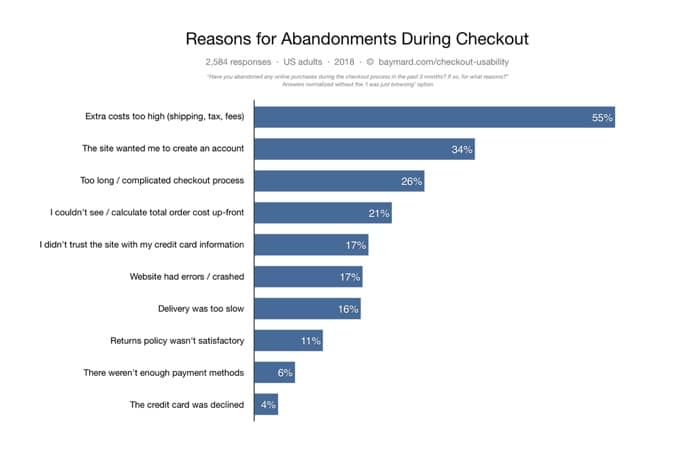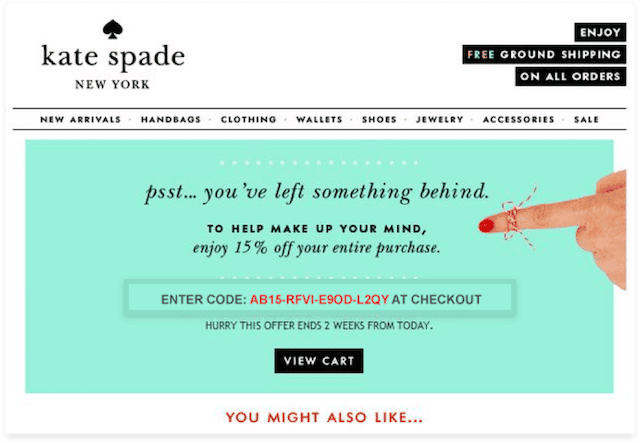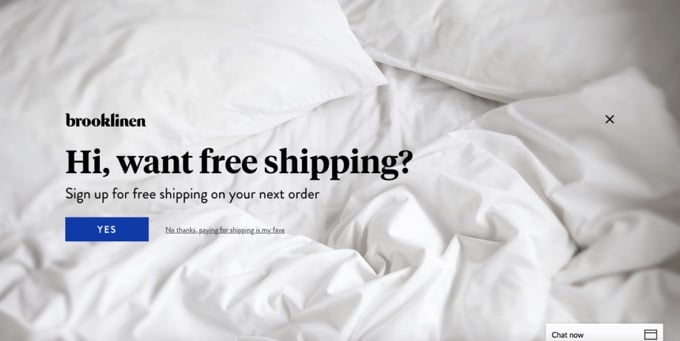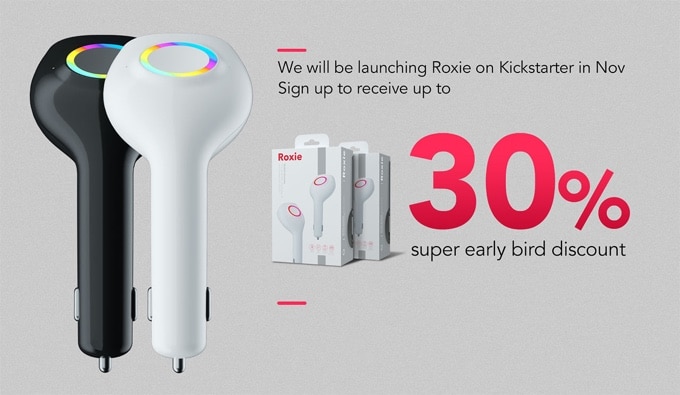Discount pricing, done correctly, can help you gain and retain loyal customers in both good and bad times.
But when executed poorly, it can program your customers to only make a purchase when a product is on discount. And that, obviously, diminishes your brand value.
So what is the difference between a discount pricing done correctly and one that is handled incorrectly?
Well, the answer is simple: it’s all in the strategies and tactics you choose to deploy.
We have already discussed discount strategies in the previous article and indicated how you should align your strategy to your brand. In that same article – Staying on Brand with Discounts and Promotions – we also offered advice on how to come up with promotion strategies that will differentiate your brand position from other competitors.
Going in blindly without being tactical can paint a picture of a business that isn’t confident in its product value. When pitching a discount to close a deal, the strategies and tactics you use are usually more important than how much the discount is.
This article will walk you through 11 eCommerce discount pricing strategies and tactics that will increase the conversion rate of your eCommerce websites. But before we delve into that, let’s begin by looking at what experienced eCommerce folks think of discount pricing strategies.
Meaningful discount pricing strategies from experts
Offering discounts to customers isn’t a new pricing strategy by any stretch. But it’s still as effective as ever. Before you slash down your prices, hear what savvy eCommerce marketers have to say about discount tactics.
Rishi says that discounts can earn you conversions:
Rishi Rawat – Frictionless Commerce Founder
Price elasticity states as price go down demand goes up.
This is true with discounting too. Discounts lead to better conversions. To a point.
A full price item discounted 20% should see around 20% bump in sales.
Increase discount by another 20% (on top of the original 20%) and expect to see a corresponding ~20% lift.
But this logic doesn’t continue for deep discounting.
Why? Because psychology starts shifting. With deep discounting, you will notice a plateauing effect. Beyond a point, the discount doesn’t translate to better sales. Most marketers just accept their fate. But there is a solution to this. Explained below.
First, let’s understand what’s going on:
Consumers are used to seeing a 20% discount so a 20% discount is an extra nudge.
We’re not used to seeing 80% discounts. So when we see those some of us start to wonder, “wait, why am I getting this insane discount, what don’t I know?”
We start considering scenarios:
- Is this item about to be phased out?
- Is there a defect with the item I’m not aware of?
- Is this company about to shut down? Inventory liquidation? If so will I be able to make a return?
As you can see, a lot of chatter happens in the mind of the shopper.
So, what is a marketer to do? The solution is to add a message right next to the incredible discount with this phrasing: “why the heck is this item discount [x]%??”
Here [x] is dynamic and reflects the actual discount being offered.
On click, show a popup and tell your story.
Rahi believes that not every customer should earn discounts:
Rahi Jain – eCommerce Retention Consultant
Discounts should be earned by the customer rather than showered like pamphlets. (At least it should look like an earned unit). Discounts never start the journey, they are mostly used during the end of the funnel, once the customer’s mind is made up.
No one just buys after having received some coupon from a website they just landed 2 min ago. People buy first for emotional comfort and then rationalize purchase with coupon discounts or getting a deal at a sale.
In the long run, businesses need to reward loyalty –and offering coupons is one of the ways to do it. So in the customer journey, most loyal customers should get your maximum love. So start with discounting the most loyal customers and work backward towards the new customers.
Some studies have shown, customers who buy with 15% discount are more loyal than customer buying with a 50% discount. My range typical is 10% to 30% tops. Otherwise, you lose brand value in the long run and people have higher buyers remorse due to pricing trust issues.
Beatriz recommends using discounts as a way of improving customer experience:
Beatriz Estay – Small Business Content Marketing Specialist at BigCommerce
When I think back on some of my favorite experiences with brands I love, I find one thing in common — the brands I am loyal to have made me feel important and valued.
Across different brands, I’ve been included in engaging loyalty programs, offered exclusive discounts, and unlocked access to high-quality content.
And, it turns out my happiness from these brands traces back to science.
In a study completed in 2012, researchers found that coupon recipients who received a $10 voucher experienced a 38% rise in oxytocin levels and were 11% happier than those who did not receive a coupon.
This discovery holds true across various generations as well. In a study by Bizrate Insights, consumers, on average, deemed discounts and coupons to be ‘very important’ during their digital purchasing decisions. Notably, younger consumers find discounts and coupons more important than older generations.
While there is a lot of positive data confirming the value of a strong promotional strategy, it’s important your business, no matter the size, takes the necessary steps to protect your bottom line when brainstorming ways to offer more value to your customer base.
Promotional strategies don’t only live at the beginning of the customer journey. In fact, offering promotions or discounts at unique moments in the customer journey can strengthen your customer experience and increase conversions.
How E-commerce Discount Pricing Strategy Work
In its simplest form, a discount pricing strategy explains why you’re discounting, whereas discount tactics indicate how you will discount. Best eCommerce discount pricing strategies are always on-brand –meaning, your brand determines the discount strategy to use.
Besides being rooted in your overall brand, eCommerce discount pricing strategies should also have a clear definition of what you want to achieve with the discount. Most eCommerce websites often deploy discount pricing when they want to generate more conversions. But other goals associated with eCommerce discount pricing strategy may include:
- Acquiring new customers
- Increasing sales
- Increasing customer retention
- Get rid of unsold or declining products
- Promoting new products
So let’s say the goal of your discount pricing strategy is to increase the customer retention rate. The discount tactics that you have to deploy should encourage customers to keep buying from your store. Membership or value-adding discount tactics can be ideal for such a strategy.
When you have a clearly defined eCommerce discount pricing strategy, the next thing you’d need is a discount tactic that you will use to achieve the desired goal. Discount pricing strategies are implemented through tactics. Therefore, discount tactics are the micro-level actions in the direction of attaining the goal of your discount pricing.

Failure to be tactical with your discount pricing strategies can be detrimental in two ways.
On one hand, it can work against your brand considering that you will be just handing out offers with no direction. On the other hand, you are more likely to provide a deal worth way more than what you stand to receive from the customer, and this will certainly affect your profit margin.
It’s important to note that eCommerce discount pricing strategies are either customer-focused or product-focused. Since the strategy comes first, it automatically dictates the focus of your discount tactics. This is to say that if your strategy is customer-focused, your tactics will also have to follow suit. To illustrate this point, let’s take a deep dive in customer-focused and product-focused discount pricing strategies and tactics:
Customer-focused discount pricing strategy
Discount pricing on eCommerce websites has the power to influence consumer buying behavior. In fact, customer-focused discount pricing strategies can either change or reinforce the existing behavior of a targeted group of customers.
This is why more than 59% of online consumers search for discounts before buying anything, and more 64% do not make a purchase until they are on discounts.
A customer-focused discount pricing strategy requires you to start by identifying the current behavior of a certain group of customers, and knowing the desired behavioral outcome that you would like to achieve. This should be done before you can even think of tactics you will use to achieve the goal.
Having said that, let’s start by looking at customer-focused discount tactics that you can use to influence customers to make a purchase before we get to those that can reinforce customer behavior.
Abandoned Cart Discounts
According to the Baymard Research Institute, nearly 70% of online shoppers add items to their online shopping cart and leave before completing a purchase. This research concluded that extra costs are the number one reason why shoppers abandon.

Kate Spade New York solves this cart abandonment problem by offering a 15% discount to prospects who didn’t complete a purchase.

This tactic helps them recover business from prospects who have already expressed interest in their products. Cart abandoned discounts have a way of motivating shoppers to complete a purchase, and they can even encourage them to come back again in the future.
New customers discount
For small businesses with lean profit margins, handing out discounts may not seem like the most logical marketing tactic –but it works. Think of it as a short-term sacrifice that you can use to push prospects to choose your product/service over competitors.
For eCommerce stores, there are many ways to implement discount tactics to convince new customers to buy from your store. You can offer free shipping to first time buyers. Or offer a free complimentary gift when a new customer purchases something. Or maybe reduce the order price for every new customer who spends over $50? They are all good ideas that can influence customers’ buying decisions.
Getting a bit more creative, you might also partner with Key Opinion Leaders who have a following that aligns with your targeted audience. You provide their followers with a discount code for your products. This is a win-win situation for both parties as it will more likely reinforce their members while you also gain greater awareness and new clients.
Referral discounts
Just like discounts for new customers, a referral discount tactic is deployed in a way that only targets a select group of existing customers. It’s not for every customer. Only loyal customers who advocate for your brand by referring their friends and family to your store should benefit from this.
To avoid digging deep into your profits, you should only offer a referral discount if the referred person makes a purchase. If you think about it, this discount tactic is a cost-efficient way of encouraging word of mouth advertising.
Subscription Discounts
Giving a discount to people who are willing to engage with your brand, either by subscription or by engagement over social media, is one of the most sure-fire ways to open up a portal to future exchanges. Customers who receive such exclusive offers simply for belonging to a certain group will feel that they’ve earned their reward—and will appreciate your brand’s generosity even more.
If your non-followers are aware that they’ll receive extra value from signing up for your mailing list, they’ll be more likely to do so. This tactic helps build your CSM, and it helps cast the net to an even wider audience when done successfully on Social Media. Subscription discounts can also be deployed on Saas and lead-gen sites.
Exit intent popup discounts
I understand that popups can be so annoying, but your customers can love them if they come with an extra value. If a customer is about to exit your eCommerce store without buying anything, a well-timed and delivered popup discount offer can be just what they need to change their mind.

Brooklinen.com is a good example of an eCommerce site that uses exit-intent popup offers – in the form of free shipping – to convince visitors to make another order. One thing I like about exit-intent discounts is that they can be easily customized to suit different types of visitors.
Having said all that, now let’s take a look at customer-focused discount tactics that can reinforce customer behavior.
Value-adding discount
Value add offers come in different shapes and sizes. Basically, they are given to those customers who have supported the business. You can either offer a small free gift, free shipping, or free delivery to the customer’s address.
I have a close friend who recently bought a pair of formal shoes from a small eCommerce shop, and he was offered a shoe polish as a free gift. With value-adding discounts, the free gift doesn’t have to be something big –just a small token of appreciation will definitely make customers think of your brand if ever they want to purchase the same product again.
Membership discount
If eCommerce marketers were to sit around a fire and share their worst fears or nightmares, a low customer retention rate will be among the mentioned fears. It’s difficult for eCommerce businesses with a low customer retention rate to stay afloat because it costs way more to get new customers than to retain old ones.
So one of the ways that can be used to get rid of this worst fear, is to deploy membership discounts. This discount tactic has been around for decades, and it is a proven way of positively reinforcing customers to be loyal to your brand or to keep on buying from you over and over again. Membership discounts also secure your relationship with your customers as they will feel like they are being appreciated for their support.
Quantity/Volume Discounts
Volume discount is a smart way of convincing customers to purchase in bulk. For instance, a clothing eCommerce website that employs “steps” in its quantity discounts can offer shoes at $10 each, five for $40, and 10 for $75.

There are many ways to go about this tactic –some eCommerce brands offer loyalty cards that give customers a free item after they have purchased a certain number of items.
Various marketing and promos such as “buy one get one free and buy two and get one free” are associated with the concept of quantity discount. Quantity discounts can also be used as a product-focused tactic –especially when you want to move out of the goods from the warehouse.
Product-focused discount pricing strategy
As you can tell from the name, a product-focused discount tactic is all about the product, and this means that it can be deployed without segmentation or targeting a certain type of customer. This approach is usually taken with the aim of selling an outdated product, clearing old stock, or promoting a recently launched product.
That said, let’s take a look at how product-focused tactics work:
Product in Decline
When sales of a product start to go down, that can be an indication that the need for that product is declining. Faced with such a scenario, some small businesses may not afford to offer a new product that will help keep the customer retention rate high.
Improving or changing the features of an evergreen product may not always work –but adjusting the price might be a safe bet to keep the product relevant.
Yes, you will probably make less profit, but if that’s the only shot that keeps customers back to your store, why not give it a try? My only problem with lowering the price is that customers might never buy the product at a full-price ever again.
To avoid this, you will have to justify why you are offering a discount and hide the fact that product sales are decreasing. One way of doing that is by offering them as seasonal discounts. Do you think customers will question the value of a discounted product offered on Black Fridays, Cyber Mondays, President’s Day, Thanksgiving, or during the festive season?
Promoting a new product
When you launch a new product, you want as many people to buy it as possible, right?
Many eCommerce brands are now putting even more effort into driving up their pre-order sales, by offering early-bird discounts on a product that is yet to be released.
Here’s a good example from CarKit AI:

Not only will this tactic increase awareness and traction for the new product, but it will also help gauge the demand for the new product.
But it’s important to also mention that you need to exercise caution when rolling out a discount on new products. Discounts can have an adverse effect on the prospect’s mind. So it’s either you don’t offer large discounts on new products, or you limit the number of discounts to a certain number.
Stock clearance discounts
Many clothing eCommerce businesses experience the problem of excess stock, usually when it is the end of the year or season. The need to clear old stock to make room for new stuff is a common reason why eCommerce shops may need to offer clearance discounts.
However, even if you are offering discounts to get rid of old stock, you still have to be tactful. Check out some of the ideas you can employ:
Flash Sale: announce limited time offers so as to create a sense of urgency in the mind of the shoppers. When a product is being discounted under timestamp conditions, buyers will be eager to make a purchase before time runs out.
Buy more, get more: offering a higher discount on a purchase of multiple items will definitely help you move excess products from the eStore in a quick way. For example, on an apparel store that would be 10% off on 1 dress and 15% on 2.
Conclusion
Discount tactics may emanate from different strategies, but they all have commonalities within them. They generate revenue and increase sales. But when executed poorly, they will not just affect your profits, your brand will also get hurt. Focusing your discount tactics will help you align your pricing strategy in a way that works well with your specific business model.






